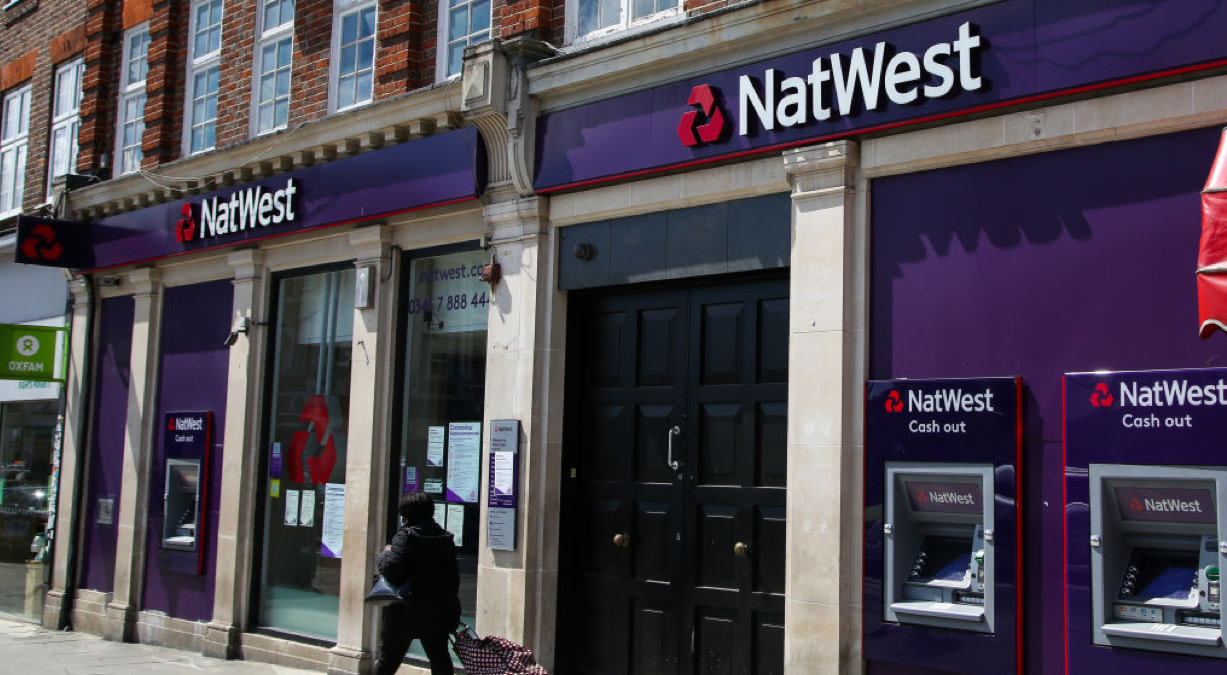NatWest reported fourth-quarter income of £3.8bn, up 8%, with strong growth in net interest income. Net interest margin rose from 1.99% to 2.19%.
Pre-tax operating profit rose 19% to £1.5bn (£1.4bn expected). That was driven by top line growth, offset somewhat by a 5% rise in operating costs, for the full year profit was broadly flat. Fourth quarter impairments of £66mn were better than expected and default levels remain low.
The group’s CET1 ratio, a key measure of financial strength, was 13.6% at the period end (13-14% target range).
A final dividend of 15.5p was announced, bringing to the total for the year to 21.5p, up 26%.
For 2025, income excluding one-off items to expected in the range of £15.2-£15.7bn (£15.5bn expected).
The shares fell 2.0% in early trading.
Our view
NatWest capped off a strong 2024 with a good set of fourth-quarter numbers, with share price weakness on the day down to what looks to be conversative guidance. It’s a similar story to last year, where we see the potential for upgrades as we move through the year.
As a traditional lender, loan default rates are an important risk to watch for. The good news for investors is that borrowers are remaining resilient, with default rates staying at low levels and expected to stay on that trend into the new year.
Deposits make up the other side of the equation, and the trend of savers looking for longer term accounts was a drag in the early parts of 2024. Those higher rate accounts essentially cost more for NatWest to run, but we are seeing those trends now stabilise. That's good news for margins - something for investors to monitor.
Costs are a key focus and we've been pleased to see continued progress on this front - medium-term targets look for sub 50% cost-income ratio (2024: 53.4%) but we don't expect that to come anytime soon.
Mortgage pricing has also been a pain point, as more profitable business written over the pandemic was replaced. But that headwind won’t be material moving forward and we see scope for loan growth here as we move through the new year with a more upbeat mortgage market.
There's also the benefit of the structural hedge - think of this as a bond portfolio that's set to roll on to better rates over the coming years. NatWest is rolling off some of the lowest rates in the sector, and should be one of the biggest beneficiaries. Extra hedge income should be able to offset the impact of any further interest rate cuts in 2025, with NatWest pencilling in four cuts across the year.
The balance sheet is in decent shape, and 2025 could be the year we see the government’s stake brought down to zero. We think it’ll be taken as a positive signal relating to the group’s strength, and a catalyst to allow some more aggressive strategy moves.
We see NatWest as one of the best-placed UK banks to benefit from several sector tailwinds. Sentiment has rightly improved over the past year after a lengthy period at depressed levels. We think that’s justified and see scope for continued growth, but there’s more pressure to deliver than in a long time and nothing is guaranteed.
Environmental, Social and governance (ESG) risk
The financials sector is medium-risk in terms of ESG. Product governance is the largest risk for most companies, especially those in the US and Europe with enhanced regulatory scrutiny. Data privacy and security are also an increasingly important risk for banks and diversified financial firms. Business ethics, ESG integration and labour relations are also worth monitoring.
According to Sustainalytics, NatWest’s management of material ESG issues is strong.
NatWest is resolving some longstanding issues but still faces legal challenges and subpar money laundering policies. Its product management lacks detail and oversight, posing risks under new consumer protection laws. Although there are gaps in data privacy and security, NatWest effectively mitigates cyber threats.
NatWest key facts
All ratios are sourced from LSEG Datastream, based on previous day’s closing values. Please remember yields are variable and not a reliable indicator of future income. Keep in mind key figures shouldn’t be looked at on their own – it’s important to understand the big picture.
This article is not advice or a recommendation to buy, sell or hold any investment.No view is given on the present or future value or price of any investment, and investors should form their own view on any proposed investment.This article has not been prepared in accordance with legal requirements designed to promote the independence of investment research and is considered a marketing communication.Non - independent research is not subject to FCA rules prohibiting dealing ahead of research, however HL has put controls in place(including dealing restrictions, physical and information barriers) to manage potential conflicts of interest presented by such dealing.Please see our full non - independent research disclosure for more information.


